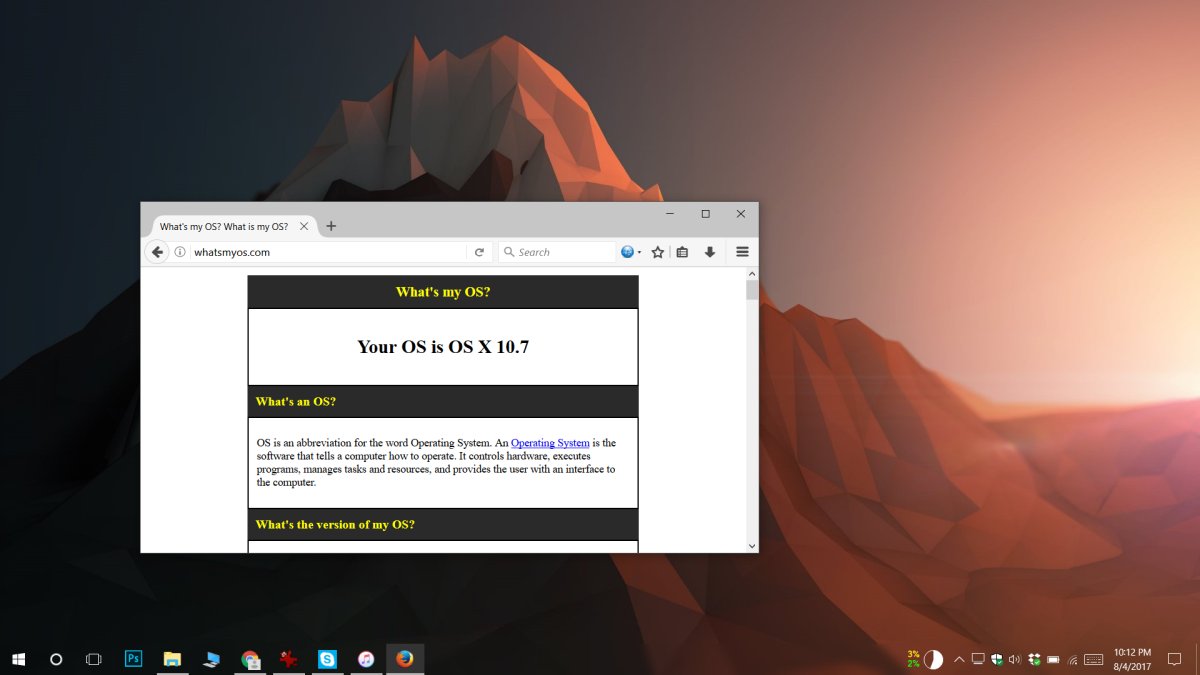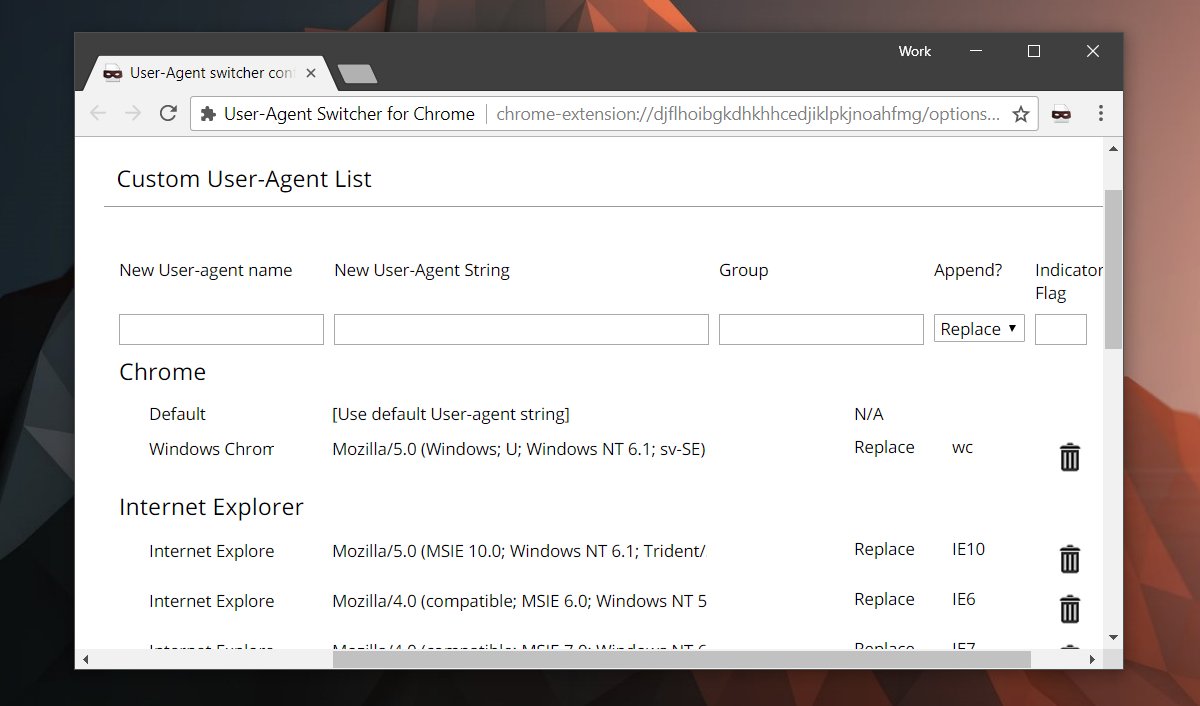How To Change Your User Agent To Mac Or Windows
A user agent is information that your browser collects from your system, and transmits to websites. This information includes which operating system you’re using and which browser you’re using. It isn’t personally identifiable information so sharing it with a website is harmless. In fact, this information can actually give you a better browsing experience. For example, if a website knows you’re using Chrome, it will load a Chrome optimized version. Browsers automatically detect and build your user agent but, you can fake it. If you want, you can change your browser’s user agent to Mac or Windows.
Browsers let you change your user agent from its console. If you aren’t familiar with the developer console, you can instead opt for an extension or add-on to change the user agent to Mac or Windows. In either case, what you essentially need is the identifier string and you can choose if you want to change it in the developer console or use an add-on. If you want to use an add-on or extension, we recommend using the add-on User Agent Switcher for Firefox and User-Agent Switcher for Chrome. This Chrome extension comes packed with its own quick user agent switcher which includes a Mac option. If you don’t use the user agent string below, you can opt for the default option the extension gives you.
User Agent Mac
The user agent string that will change your OS to macOS when you visit a website is as follows. It differs from which browser you want the website to think you’re using on macOS.
From Safari
Mozilla/5.0 (Macintosh; Intel Mac OS X 10_7_4) AppleWebKit/534.57.2 (KHTML, like Gecko) Version/5.1.7 Safari/534.57.2
From Firefox
Mozilla/5.0 (Macintosh; Intel Mac OS X 10.7; rv:12.0) Gecko/20100101 Firefox/12.0
From Chrome
Mozilla/5.0 (Macintosh; Intel Mac OS X 10_7_4) AppleWebKit/536.11 (KHTML, like Gecko) Chrome/20.0.1132.27 Safari/536.11
This will tell websites that you’re using macOS 10.7. If you want, you can change it to any other version e.g., 10.11.6. That’s the benefit of using a string instead of the default options in an extension. You can customize it to suit your needs.

User Agent Windows
The user agent for Windows is as follows.
From Safari
Mozilla/5.0 (Windows; U; Windows NT 6.1; sv-SE) AppleWebKit/533.19.4 (KHTML, like Gecko) Version/5.0.3 Safari/533.19.4
From Firefox
Mozilla/5.0 (Windows; U; Windows NT 6.1; sv-SE) Gecko/20100101 Firefox/12.0
From Chrome
Mozilla/5.0 (Windows; U; Windows NT 6.1; sv-SE) AppleWebKit/536.11 (KHTML, like Gecko) Chrome/20.0.1132.27 Safari/536.11

This will fool websites however, you cannot expect it to go beyond that. It will not, for example allow you access to macOS services desktop services like iMessages. These strings are limited to working in browsers and telling them you’re using different hardware. They are neither a proxy, a VPN, or an unlocking tool for product specific apps.
You can change your user agent to things like share photos to Instagram from your desktop, or download the Windows 10 ISO without the media creation tool
